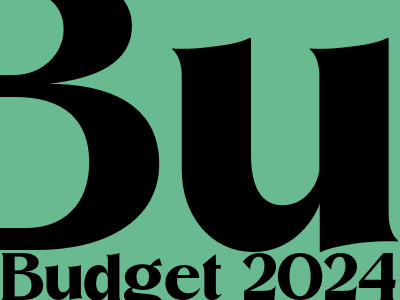Budget 2024 Live: Key Highlights and What They Mean for You
Introduction
The Union Budget of India for the financial year 2024-25 was presented by the Finance Minister on February 1, 2024. The budget outlines the government's fiscal plans for the upcoming year, including its spending priorities, tax policies, and economic growth targets. Here are the key highlights of the budget and what they mean for you:
Key Highlights
1. Fiscal Deficit Target
The government has set a fiscal deficit target of 5.9% of GDP for 2024-25. This is lower than the revised estimate of 6.4% for the current year, indicating the government's commitment to fiscal consolidation. Fiscal consolidation refers to the government's efforts to reduce its budget deficit, usually by increasing revenue or reducing expenditure.
2. Capital Expenditure
The budget has allocated ₹10 lakh crore for capital expenditure in 2024-25, a significant increase from the current year's allocation. This increased spending on infrastructure, such as roads, railways, and energy, is expected to boost economic growth and create jobs. Capital expenditure refers to the government's spending on long-term assets, such as infrastructure and machinery, which are expected to provide benefits over a period of years.
3. Personal Income Tax
No major changes have been proposed in the personal income tax slabs or rates for 2024-25. However, the budget has introduced a new tax regime with lower tax rates but fewer exemptions and deductions. Taxpayers can choose between the old and new tax regimes based on their individual circumstances.
4. Agriculture and Rural Development
The budget has allocated ₹20 lakh crore for agriculture and rural development, with a focus on increasing farmers' income, improving agricultural productivity, and developing rural infrastructure. This includes measures such as providing financial assistance to farmers, promoting agricultural research and technology, and expanding irrigation facilities.
5. Healthcare and Education
The budget has increased the allocation for healthcare and education by ₹1 lakh crore each. This increased spending is aimed at improving access to quality healthcare and education for all citizens, with a focus on rural and underserved areas.
6. Green Energy and Climate Change
The budget has allocated ₹1 lakh crore for green energy and climate change initiatives. This includes measures such as promoting renewable energy sources, reducing carbon emissions, and developing climate-resilient infrastructure.
7. Social Welfare Schemes
The budget has increased the allocation for social welfare schemes, such as the Pradhan Mantri Garib Kalyan Anna Yojana (PMGKAY), which provides free food grains to the poor. This increased spending is aimed at providing social safety nets for the most vulnerable sections of society.
8. Digital Infrastructure
The budget has allocated ₹1 lakh crore for digital infrastructure development. This includes measures

Comments